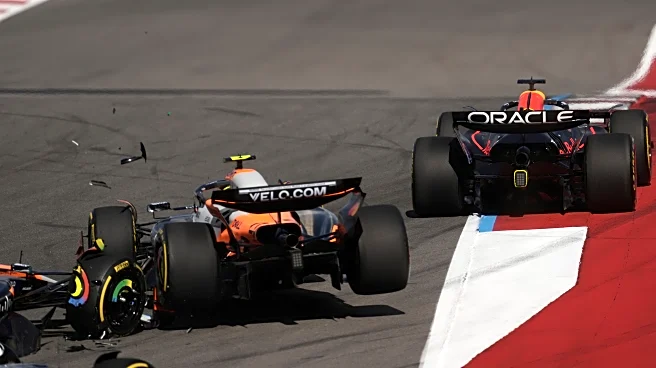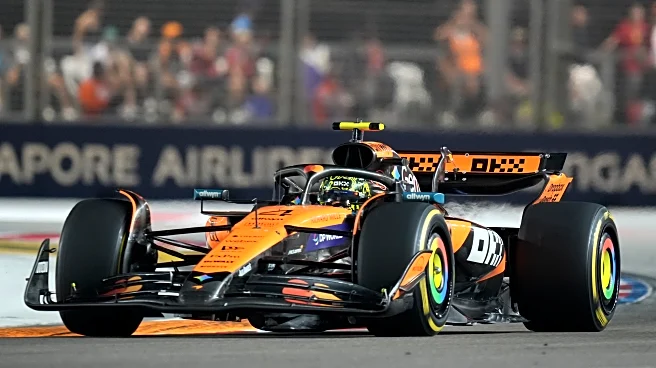What's Happening?
During the United States Grand Prix sprint race, a collision occurred between McLaren drivers Oscar Piastri and Lando Norris. McLaren's team principal, Andrea Stella, attributed the incident to the actions of rival drivers, specifically pointing to Sauber's
Nico Hulkenberg and Fernando Alonso. The crash happened as Piastri attempted to maneuver past Norris, resulting in contact with Hulkenberg. Piastri, who was leading Norris in the championship by 22 points, expressed disappointment over the incident, noting that he tried to cut back on Norris but was hit, which led to the collision. Norris, on the other hand, stated that he was simply unlucky to be caught in the aftermath of the crash. Hulkenberg, who had qualified fourth, expressed frustration over the incident, describing it as 'messy' and unavoidable due to the circumstances.
Why It's Important?
The collision between Piastri and Norris at the US Grand Prix sprint race highlights the intense competition and high stakes in Formula 1 racing. For McLaren, the incident is significant as it affects their standing in the championship, with Piastri and Norris being key drivers. The crash underscores the challenges teams face in managing on-track dynamics and the impact of rival drivers' actions. The incident also brings attention to the strategies and decision-making processes of drivers during high-pressure moments, which can have substantial consequences for their teams' overall performance in the championship.
What's Next?
Following the collision, McLaren and the involved drivers may review the incident to assess any potential repercussions or adjustments needed in their racing strategies. The team might also engage in discussions with race officials regarding the conduct of rival drivers. As the championship progresses, McLaren will likely focus on minimizing such incidents to maintain their competitive edge. The incident could also prompt discussions within the Formula 1 community about race safety and driver conduct, potentially leading to changes in regulations or guidelines to prevent similar occurrences in the future.















